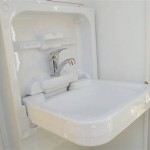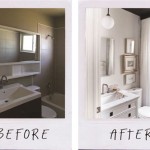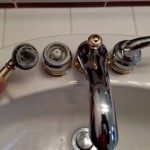How to Convert an Antique Dresser into a Bathroom Vanity
Repurposing antique furniture offers a unique opportunity to infuse character and history into modern spaces. Converting an antique dresser into a bathroom vanity is a popular DIY project that combines functionality with aesthetic appeal. This endeavor requires careful planning, precise execution, and a commitment to preserving the dresser’s original charm while adapting it for a new purpose. This article provides a comprehensive guide on how to successfully transform an antique dresser into a practical and visually striking bathroom vanity.
Key Considerations Before Starting the Project
Before embarking on the conversion process, several factors warrant careful consideration. These foundational decisions will influence the overall success and efficiency of the project.
Assessing the Dresser's Condition: The first step involves a thorough evaluation of the antique dresser. Examine the wood for signs of rot, insect infestation, or structural damage. A dresser with significant decay may not be suitable for conversion, or it may require extensive and costly repairs. Check the stability of the legs, drawers, and frame. Ensure that the dresser is structurally sound enough to support the weight of a sink, plumbing, and countertop.
Determining Size and Space Requirements: Measure the available space in the bathroom where the vanity will be installed. Compare these dimensions to the dresser’s size. Leave adequate clearance for walking around the vanity and opening the drawers and doors. Consider the height of the dresser in relation to the standard vanity height. Modifications may be needed to raise or lower the dresser to achieve a comfortable and ergonomic height. Standard bathroom vanity heights typically range from 30 to 36 inches.
Selecting a Sink and Faucet: Choose a sink that complements the style and scale of the dresser. Options include undermount, vessel, and drop-in sinks. Undermount sinks offer a clean, seamless look, while vessel sinks provide a more dramatic and contemporary aesthetic. Consider the size and shape of the sink bowl, as this will impact the functionality of the vanity. Select a faucet that matches the sink and complements the overall design of the bathroom. Consider the faucet’s reach and height to ensure it aligns with the sink bowl comfortably. Ensure the faucet's finish coordinates with other bathroom fixtures, such as lighting and hardware.
Planning for Plumbing and Electrical: Determine the location of existing water supply lines and drainpipes in the bathroom. Plan how these lines will connect to the new sink and faucet. If electrical outlets are needed near the vanity for appliances like hair dryers or electric toothbrushes, plan for the installation of new outlets or the relocation of existing ones. Consult with a qualified plumber and electrician to ensure that all plumbing and electrical work complies with local building codes.
Step-by-Step Conversion Process
The transformation of an antique dresser into a bathroom vanity involves several distinct stages, each requiring precision and attention to detail.
Preparing the Dresser: Begin by thoroughly cleaning the dresser. Remove any existing hardware, such as knobs and pulls. Repair any minor damage, such as scratches or dents. Sand the dresser to create a smooth surface for painting or staining. If the dresser has an existing finish that is in good condition, lightly sanding it will provide a better surface for the new finish to adhere to. If the existing finish is peeling or damaged, it may be necessary to strip it completely before sanding.
Modifying the Drawers: The drawers will likely require modification to accommodate the sink and plumbing. Measure the dimensions of the sink and the plumbing fixtures. Determine which drawers need to be altered to create space for these components. In most cases, the top drawer or drawers will need to be cut to fit around the sink basin and drainpipe. Use a jigsaw to carefully cut out the necessary sections of the drawer. Reinforce the remaining drawer structure with wood glue and screws. Consider adding additional support to the drawer bottom to prevent sagging. Alternatively, the drawer can be converted into a false front using magnets or hinges for a more clean aesthetic that allows for easy access to the plumbing. Some choose to completely remove certain drawers to allow for access to the plumbing and storage of larger items.
Creating Access for Plumbing: Cut a hole in the back of the dresser to allow for the passage of water supply lines and drainpipes. Use a hole saw that is slightly larger than the diameter of the pipes. Position the hole so that it aligns with the existing plumbing connections in the wall. Consider adding a rubber grommet around the hole to protect the pipes from abrasion. Ensure that the hole is large enough to accommodate all necessary plumbing lines, including shut-off valves.
Sealing and Finishing: Apply a sealant to the inside of the dresser and the modified drawers to protect them from moisture. Use a waterproof sealant specifically designed for use in bathrooms. Apply several coats of sealant, allowing each coat to dry completely before applying the next. Consider using a paint or stain that is resistant to moisture and mildew. Apply a primer before painting or staining to ensure that the finish adheres properly. Apply several coats of paint or stain, allowing each coat to dry completely before applying the next. Consider using a clear topcoat to protect the finish from scratches and stains. A polyurethane or water-based varnish will help prevent water damage and maintain the integrity of the wood.
Installing the Sink and Faucet: Follow the manufacturer's instructions for installing the sink and faucet. For undermount sinks, attach the sink to the countertop using epoxy or silicone sealant. For vessel sinks, ensure the drainpipe is properly connected and sealed. Connect the water supply lines and drainpipe to the faucet and sink, ensuring that all connections are tight and leak-proof. Use Teflon tape on threaded connections to prevent leaks. Turn on the water supply and check for leaks. Tighten any connections as needed.
Adding a Countertop (Optional): While the top of the dresser can serve as the vanity's surface, adding a countertop can enhance its durability and aesthetic appeal. Options include granite, marble, quartz, and wood. Measure the dimensions of the dresser and cut the countertop to size. If using stone, hire a professional to cut and install the countertop. If using wood, seal it with a waterproof finish to protect it from moisture. Secure the countertop to the dresser using construction adhesive or screws. Consider the edge profile of the countertop for both aesthetics and safety. A rounded edge profile can prevent accidental bumps and scrapes.
Installing Hardware: Install new hardware, such as knobs and pulls, or reuse the original hardware if it is in good condition. Choose hardware that complements the style of the dresser and the overall design of the bathroom. Ensure that the hardware is properly aligned and securely fastened. Consider using different types of hardware for different drawers or doors to add visual interest.
Addressing Potential Challenges
Converting an antique dresser into a bathroom vanity is not without potential obstacles. Anticipating and addressing these challenges is crucial for a successful outcome.
Ensuring Structural Integrity
Antique dressers may have weakened joints or damaged wood. Reinforcing the dresser's structure is often necessary to ensure it can support the weight of the sink, countertop, and plumbing. Use wood glue and screws to strengthen joints. Replace any rotted or damaged wood with new wood. Consider adding additional support to the frame of the dresser. A solid base frame constructed from 2x4 lumber can provide added stability and support. Ensure that the dresser is level and stable before installing the sink and countertop. Shims can be used to level the dresser on uneven floors.
Concealing Plumbing
Exposed plumbing can detract from the aesthetic appeal of the vanity. Concealing the plumbing lines is essential for creating a clean and polished look. Use decorative plumbing covers to hide exposed pipes. Install a skirt or panel in front of the plumbing to conceal it from view. Consider using flexible supply lines to allow for easier routing and concealment of the plumbing. Ensure that all plumbing connections are easily accessible for future maintenance and repairs. A removable panel can provide access to the plumbing without compromising the aesthetic appeal of the vanity.
Maintaining Original Aesthetics
Preserving the antique dresser's original charm is a key objective of the conversion process. Avoid making any modifications that would compromise the dresser's historical significance. Use finishing techniques that are sympathetic to the dresser's original style. Consider using milk paint or chalk paint to achieve a vintage look. Avoid using harsh chemicals or abrasive materials that could damage the dresser's finish. Document the original condition of the dresser before starting the conversion process. Take photographs of the dresser from all angles. This documentation can be helpful for future restoration or reference.
Converting an antique dresser into a bathroom vanity is a rewarding project that allows for the creation of a unique and personalized bathroom space. By carefully planning and executing each step of the conversion process, the result can be a beautiful and functional piece of furniture that will be enjoyed for years to come. The combination of antique charm and modern functionality makes this project a worthwhile endeavor for any homeowner seeking to add character and style to their bathroom.

Turn A Vintage Dresser Into Bathroom Vanity

How To Convert An Old Dresser Into A Bathroom Vanity Reinvented Delaware

Dresser Into Bathroom Vanity Vessel Sink

How To Turn A Dresser Into Bathroom Vanity

How To Make A Dresser Into Vanity Tutorial An Oregon Cottage

How To Convert An Old Dresser Into A Bathroom Vanity Reinvented Delaware

How We Turned An Antique Dresser Into A Diy Bathroom Vanity Shoe Makes New

Stunning Bathroom Tour Dresser Into Double Vanity

A Pro Renovator S 6 Tips For Turning Dresser Into Bathroom Vanity

Dresser Into Bathroom Vanity Vessel Sink
Related Posts







